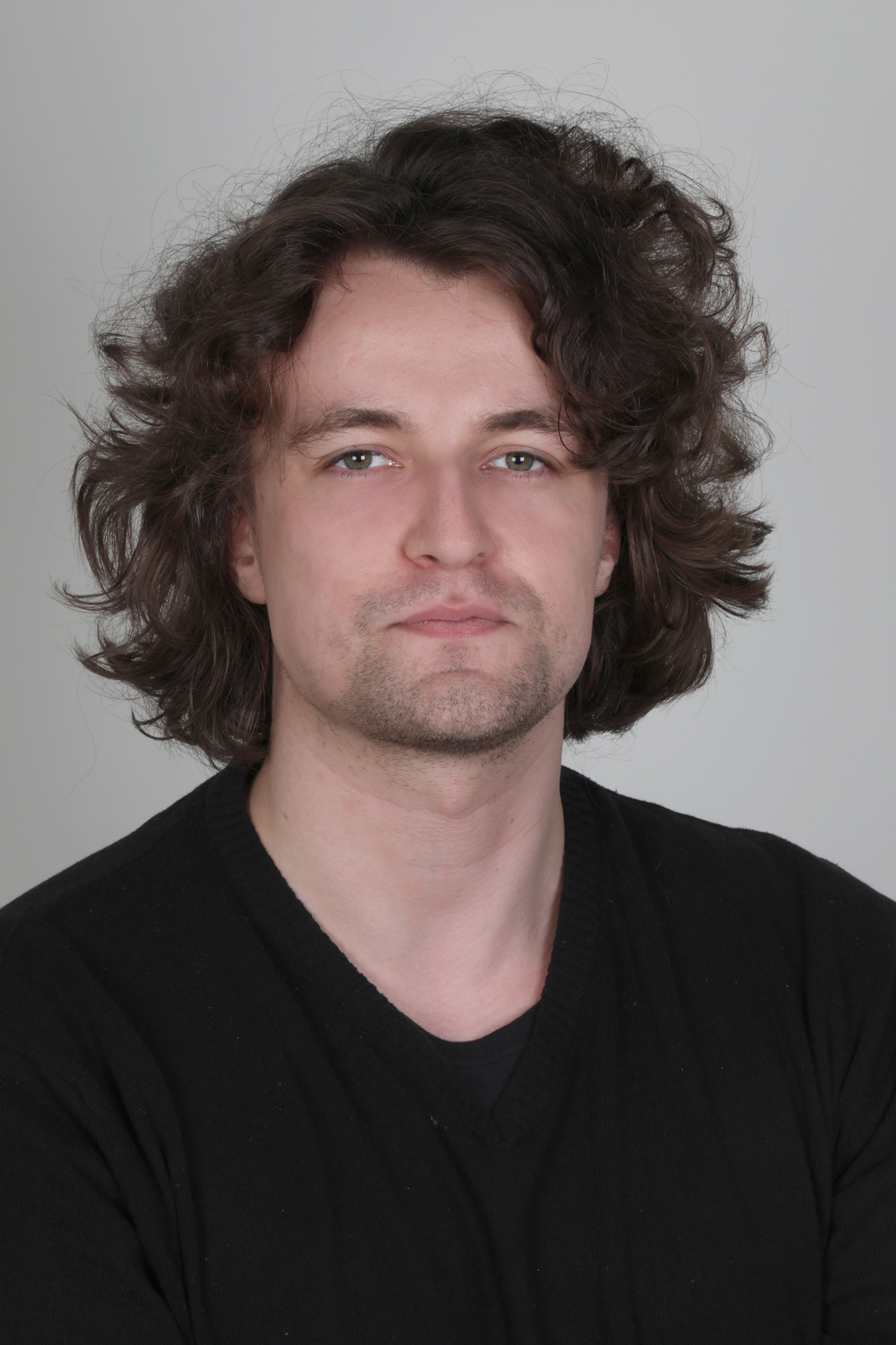History of radiology
It is difficult to describe the insights of the field of radiology without mentioning its creators and contributors, who meticulously developed the discipline through trial-and-error for the last 128 years (1). The first breakthrough event in the history of radiology is definitely associated with the icon of the field himself, one Wilhelm Röntgen, a physicist from the University of Würzburg, who in 1895 discovered a new electromagnetic phenomenon and coined it as “the x-ray” (2). The enormous therapeutic potential of x-rays was immediately noticed by both scientific and medical professionals, after observing severe burns, tissue damage and inflammation on one’s skin due to the prolonged exposition to this new form of electromagnetic radiation (3). At the time, escharotics (caustic and highly corrosive ointments and salves, used locally) were at the peak of popularity and frequently applied to treat skin cancers (4,), so basically anything that could burn off human tissue was drawing lots of attention and sparked interest.
It was just a matter of time until first attempts to use x-ray on cancer patients were conducted and already a year later (1896) an American physician Émil H. Grubbé assembled an x-ray machine and started treatment, although the authenticity of his story is still being disputed (5). Some sources quote a French physician Victor Despeignes to be actually the first one to apply x-ray in treating stomach cancer in a patient (6), although definitely both doctors had their shared contribution. In the same year Antoine Henri Becquerel, a physicist from École polytechnique in Paris, inspired by excitement revolving around Röntgen’s x-rays, discovered the spontaneous radioactivity from observing uranium salts, which at the time resembled the nature of x-rays (although the radioactive decay and electromagnetic radiation were not yet so finely defined at the time) (7).
The beginnings of brachytherapy
Following years also brought the discovery of radioactive chemical elements such as radium and polonium by Marie Skłodowska-Curie and Pierre Currie, which sped up even further the research on novel treatments that would be soon called “radiotherapy”. In the meantime, the so-called “röntgenotherapy” started for good and clinicians began applying x-rays for varied conditions, from removal of unwanted hair or hair follicles, to the treatment of epithelioma or other malignancies (8,9). Although after initial bursts of fervor in the society related to this novel, marvelous treatment, its general inconsistency combined with mixed outcomes and the public opinion gradually switching to the resentment towards röntgenotherapy, decreased the popularity of the new method for many following years (3).
Meanwhile, the experiments with radium continued and after some accidental skin burns with improperly stashed radium vials under lab coats, the new idea arose – the usage of the newly discovered radioisotopes to achieve similar effects to the röntgenotherapy. What soon became a huge advantage in researching the treatments with radioactive elements was the freedom of choice in delivering them to the patients, which was already topping the x-ray therapy, which potential was significantly limited due to the issues of exposition (10). Thus first trials started and they were really original in their forms and shapes: radium-infused water baths, direct inhalation of radium salts, glass vials containing radioisotopes duct-taped to people’s faces and bodies, the creativity in the means of delivery was limitless (11). It is reported that it was Pierre Currie himself, who in 1901 suggested direct insertion of radioactive salts into people’s bodies and targeting the area of the tumor as a way of effective treatment (12).
In addition, two years later Alexander Graham Bell, the creator of the first telephone, also suggested a similar approach, which of course was executed and tried multiple times with successes, followed by many successful demonstrations (12,13). And these particular moments in history are believed to be the birth of brachytherapy, the art of safe insertion of radioactive material into the area of the human body affected by the neoplastic tissue undergoing malignant transformation into cancer.
Brachytherapy nowadays
Brachytherapy is still a viable way of treating cancer, despite its over century long history of development and clinical practice since the first radium salt experiments. It is estimated that the whole brachytherapy market will soon top over 2 billion USD in value with a significant annual growth rate (8%) (14). Although it is not the only way of treating tumors by radiological means, it still constitutes a tremendous branch of modern oncology (15). Nowadays, after several transformations and upgrades to the technique itself, the low-dose-rate (LDR) brachytherapy is considered the current state-of-the-art since the 1980s (16). Although high-dose-rate (HDR) brachytherapy is also applicable, where the stronger radioisotopes (e.g. iridium-192 or cobalt-60) are utilized (16).
Brachytherapy is safe and cost-effective, being highly appreciated by clinicians especially in the treatment of prostate and colon cancer, as the advantage here is the local accessibility of these tumor entities to the treatment and safe delivery methods. In addition, statistically both of these tumors are ranked as frequently occurring, constituting 10.7% and 7.8% of all total new cancer incidences respectively, according to the WCRF (17).
As far as impressive the numbers are, brachytherapy is not perfect and has its flaws. Both HDR and LDR iterations can be either applied alone or combined with other treatments, yet there are still reports of acute and prolonged side effects, which can vary depending on type (HDR or LDR) and type of cancer entity. The risk of exposing family members or relatives to radiation after treatment constitutes a safety hazard, although for temporary application the risk is close to minimal (18).
Comparing to direct external beam radiotherapy (EBRT), where the strong waves of ionizing radiation is delivered to the tumor site , brachytherapy is more localized on the tumor mass and does not effect as much the neighboring healthy cells, whilst still keeping similar treatment efficiency (19).
Although brachytherapy might be underperforming as a method when the cancer metastasizes from the primary tumor site and starts developing secondary malignancies in the system, new attempts are undergoing to overcome this (20). On the other hand, the applicability of brachytherapy depends heavily on the type of the cancer entity and thus far is still limited. Despite all of it and in spite of some reports suggesting the decline of brachytherapy as a method of choice in treating cancer, the current advancement of imaging techniques (such as magnetic resonance imaging (MRI) and computer tomography (CT) or radiotracing techniques) (21) directly supports the image-guided therapies, which also nowadays includes the iterations of brachytherapy.
Future of brachytherapy
Not only the technological aspects of imaging should be improved, but also the principles ruling the century old brachytherapy still deserve their high spot on research funding lists. Nowadays, the newest approach of personalized medicine called theranostics, a combined words of therapeutics and diagnostics (22), utilizes similar radioisotopes as brachytherapy, frequently used in nuclear medicine as radiotracers for x-ray imaging, now being used as treatments as well. Various drugs, in forms of antibodies, peptides, sugars or chelating agents conjugated with emitters of gamma rays for radiotracing, are now used as both ways of localizing metastases, cancer primary sites, as well as deliver the active substance to the cancer entity, which later can employ brachytherapy for a boosting treatment (23). Who knows, maybe brachytherapy has another hundred years of development and practice of saving human lives coming up?
Editorial Board’s Note: The future of brachytherapy in Poland appears promising, especially concerning the advancement of personalized medicine and the utilization of radiotracers for diagnostic and therapeutic purposes. There is potential for further innovations in this field, which could enable brachytherapy to continue evolving and refining as an effective method for cancer treatment.
Bibliography:
- Scatliff JH, Morris PJ. From Roentgen to magnetic resonance imaging: the history of medical imaging. N C Med J. 2014 Mar-Apr;75(2):111-3.
- Berger M, Yang Q, Maier A. X-ray Imaging. 2018 Aug 3. In: Maier A, Steidl S, Christlein V, et al., editors. Medical Imaging Systems: An Introductory Guide [Internet]. Cham (CH): Springer; 2018. Chapter 7. Available from: https://www.ncbi.nlm.nih.gov/books/NBK546155/ doi: 10.1007/978-3-319-96520-8_7
- MacKee, George Miller (1921). X-rays and radium in the treatment of diseases of the skin. Lea & Febiger.
- Doyle C, D’Arcy C, Ryan A. Escharotic agents: a Victorian remedy in the 21st century. Clin Exp Dermatol. 2022 May;47(5):1006-1009. doi: 10.1111/ced.15072. Epub 2022 Jan 25. Erratum in: Clin Exp Dermatol. 2022 Dec;47(12):2348. PMID: 35078263.
- News of Science. Science. 1957 Jan 4;125(3236):18-22. doi: 10.1126/science.125.3236.18. PMID: 17835363.
- Despeignes, Victor. Observation concernant un cas de cancer de l’estomac traité par les rayons Röntgen. Lyon Médical: Gazette Médicale et Journal de Médecine Réunis (in French): 503–506.
- Jönsson BA. Henri Becquerel’s discovery of radioactivity – 125 years later. Phys Med. 2021 Jul;87:144-146. doi: 10.1016/j.ejmp.2021.03.032. Epub 2021 May 5. PMID: 33962859.
- Pusey, Wm. Allen (1900). Roentgen rays in the treatment of skin diseases and for the removal of hair. Journal of Cutaneous Diseases Including Syphilis. 18: 302–318.
- PIZON P. Les origines de la roentgenthérapie en France, 1896-1904 [The origins of roentgenotherapy in France, 1896-1904]. Presse Med (1893). 1953 Feb 25;61(13):282-4. Undetermined Language. PMID: 13055794.
- Knox, Robert (1918). Radiography and Radio-therapeutics: Radio-therapeutics.
- Metzenbaum, Myron (1905). Radium: Its value in the treatment of lupus, rodent ulcer, and epithelioma, with reports of cases. International Clinics. 4:14: 21–31.
- Gupta VK. (1995). Brachytherapy – past, present and future. Journal of Medical Physics. 20: 31–38.
- Glicksman AS. Radiobiologic basis of brachytherapy. Semin Oncol Nurs. 1987 Feb;3(1):3-6. doi: 10.1016/s0749-2081(87)80078-5. PMID: 3645696.
- https://www.prlog.org/12390829-brachytherapy-market-recovery-to-reach-us-2-4-billion.html
- Skowronek J. Current status of brachytherapy in cancer treatment – short overview. J Contemp Brachytherapy. 2017 Dec;9(6):581-589. doi: 10.5114/jcb.2017.72607. Epub 2017 Dec 30. PMID: 29441104; PMCID: PMC5808003.
- Gray C, Campbell K. High Dose Rate Brachytherapy versus Low Dose Rate Brachytherapy for the Treatment of Prostate Cancer: A Review of Clinical Effectiveness and Cost-Effectiveness [Internet]. Ottawa (ON): Canadian Agency for Drugs and Technologies in Health; 2019 Feb 14.
- https://www.wcrf.org/cancer-trends/worldwide-cancer-data/
- Michalski J, Mutic S, Eichling J, Ahmed SN. Radiation exposure to family and household members after prostate brachytherapy. Int J Radiat Oncol Biol Phys. 2003 Jul 1;56(3):764-8. doi: 10.1016/s0360-3016(03)00002-6. PMID: 12788183.
- Moll M, Renner A, Kirisits C, Paschen C, Zaharie A, Goldner G. Comparison of EBRT and I-125 seed brachytherapy concerning outcome in intermediate-risk prostate cancer. Strahlenther Onkol. 2021 Nov;197(11):986-992. doi: 10.1007/s00066-021-01815-z. Epub 2021 Aug 5. PMID: 34351453; PMCID: PMC8547207.
- Walter F, Rottler M, Nierer L, Landry G, Well J, Rogowski P, Mohnike K, Seidensticker M, Ricke J, Belka C, Corradini S. Interstitial High-Dose-Rate Brachytherapy of Liver Metastases in Oligometastatic Patients. Cancers (Basel). 2021 Dec 13;13(24):6250. doi: 10.3390/cancers13246250. PMID: 34944869; PMCID: PMC8699459.
- Mayerhoefer ME, Prosch H, Beer L, Tamandl D, Beyer T, Hoeller C, Berzaczy D, Raderer M, Preusser M, Hochmair M, Kiesewetter B, Scheuba C, Ba-Ssalamah A, Karanikas G, Kesselbacher J, Prager G, Dieckmann K, Polterauer S, Weber M, Rausch I, Brauner B, Eidherr H, Wadsak W, Haug AR. PET/MRI versus PET/CT in oncology: a prospective single-center study of 330 examinations focusing on implications for patient management and cost considerations. Eur J Nucl Med Mol Imaging. 2020 Jan;47(1):51-60. doi: 10.1007/s00259-019-04452-y. Epub 2019 Aug 13. PMID: 31410538; PMCID: PMC6885019.
- Jeelani S, Reddy RC, Maheswaran T, Asokan GS, Dany A, Anand B. Theranostics: A treasured tailor for tomorrow. J Pharm Bioallied Sci. 2014 Jul;6(Suppl 1):S6-8. doi: 10.4103/0975-7406.137249. PMID: 25210387; PMCID: PMC4157283.
- Lyu M, Chen M, Liu L, Zhu D, Wu X, Li Y, Rao L, Bao Z. A platelet-mimicking theranostic platform for cancer interstitial brachytherapy. Theranostics. 2021 Jun 4;11(15):7589-7599. doi: 10.7150/thno.61259. PMID: 34158868; PMCID: PMC8210607.
Aleksander Nowak



